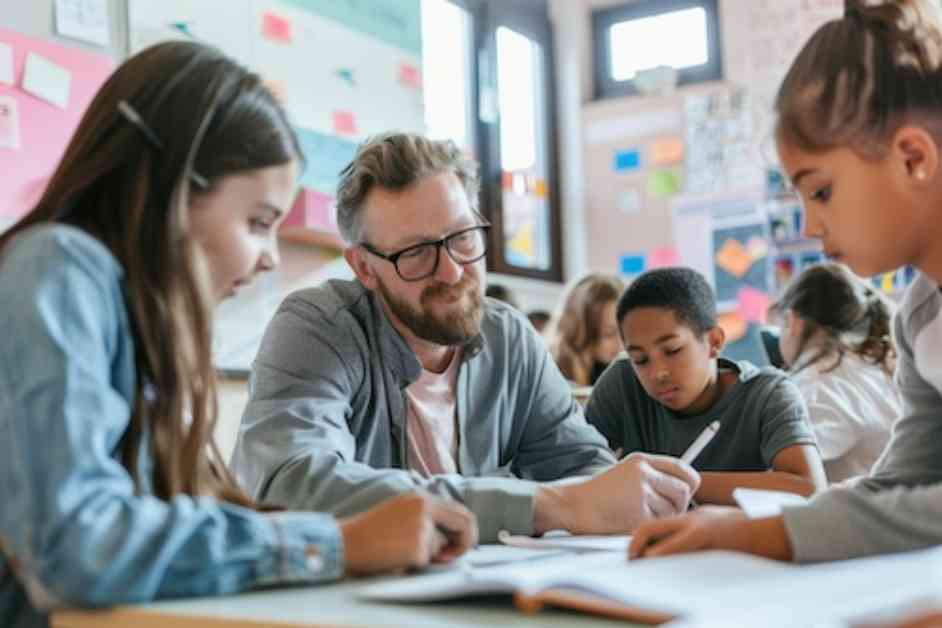Maximizing Paraeducators in Structured Literacy Classrooms: 6 Effective Strategies
In the world of education, teachers are often seen as the main characters, leading the way and guiding students to success. However, behind every great teacher, there is often a paraeducator providing essential support and assistance. These unsung heroes of the classroom play a crucial role in helping teachers create a structured literacy environment that maximizes student learning and achievement.
Paraeducators are more than just an extra set of hands in the classroom. They are valuable partners who can enhance instruction, provide targeted support to students, and help create a positive and inclusive learning environment. With the ongoing challenges of teacher shortages, mixed-ability classes, and the increased need for intervention, it is more important than ever to elevate the role of paraeducators in structured literacy classrooms.
Clear Communication with Paraeducators
One of the key factors in maximizing the impact of paraeducators in structured literacy classrooms is clear communication. Teachers must ensure that paraeducators understand their roles and responsibilities, as well as the content and curriculum being taught. By establishing open lines of communication and providing ongoing training and support, teachers can empower paraeducators to effectively support literacy instruction based on the science of reading.
Paraeducators can benefit from specific training on structured literacy practices, such as phonemic awareness, phonics, fluency, vocabulary, and comprehension. By equipping paraeducators with the knowledge and skills they need to support these essential literacy components, teachers can create a more cohesive and effective instructional team.
Effective Strategies for Maximizing Paraeducator Impact
1. Multilingual Learners and Special Populations
Multilingual learners, especially newcomers, often require additional support with oral language development and pronunciation as they build foundational literacy skills. Paraeducators can provide one-on-one or small-group support to these students, helping them progress at an appropriate pace. Bilingual paraeducators can be especially valuable in supporting language development, vocabulary acquisition, and comprehension for students who speak languages commonly found in the classroom.
2. Intervention and Enrichment
Paraeducators can play a vital role in supporting both intervention and enrichment activities in structured literacy classrooms. By working with small groups of struggling readers or advanced learners, paraeducators can provide targeted support that complements the teacher’s instruction. This collaborative approach allows teachers to focus on the needs of the whole class while paraeducators work with specific groups to reinforce skills and concepts.
3. Stations and Rotations
In a structured literacy classroom, paraeducators can serve as an additional station during rotations, providing students with opportunities to practice skills independently or in small groups. By incorporating paraeducators into station-based learning activities, teachers can ensure that all students receive individualized support and instruction that meets their specific needs.
4. Supporting New Students
When a new student joins a structured literacy classroom, paraeducators can play a crucial role in helping them acclimate to the learning environment and catch up on missed instruction. By working with new students on diagnostic assessments, reviewing previous skills, and providing additional support with software programs, paraeducators can help ensure a smooth transition for students and minimize disruptions to the classroom routine.
5. One-on-One Practice
Sometimes, students require extra support and attention to overcome challenges in their learning. Paraeducators can work with individual students or small groups to provide targeted instruction and reinforcement of key skills. By collaborating with the teacher to identify areas of need and develop personalized intervention strategies, paraeducators can help students make significant progress in their literacy development.
6. Monitoring Self-Guided Software
In a structured literacy classroom, self-guided software programs can be a valuable tool for supporting student learning. However, paraeducators can play a critical role in monitoring student progress, providing support during independent practice, and ensuring that students stay on task while using the software. By actively engaging with students as they work through self-guided activities, paraeducators can help maximize the effectiveness of these tools and enhance student learning outcomes.
Conclusion
Paraeducators are essential members of the instructional team in structured literacy classrooms, providing valuable support and assistance to teachers and students. By implementing effective strategies to maximize the impact of paraeducators, teachers can create a more dynamic and inclusive learning environment that meets the diverse needs of all students. Through clear communication, targeted training, and strategic collaboration, teachers can empower paraeducators to elevate their role and make a meaningful difference in student achievement.
As educators, we must recognize the invaluable contributions of paraeducators and provide them with the support and resources they need to excel in their roles. By working together as a cohesive team, teachers and paraeducators can create a structured literacy classroom that fosters student growth, achievement, and success.

